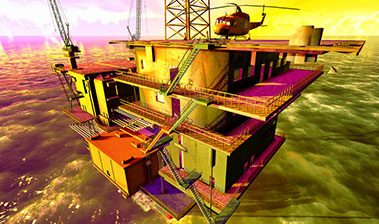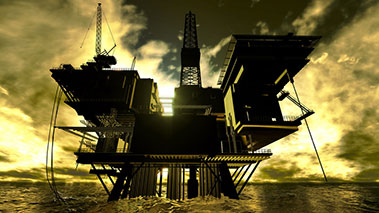FAQs & User Manuals
PaleoGIS Frequently Asked Questions
General FAQs
How do I purchase PaleoGIS?
To receive a free evaluation license with demo plate models—or to purchase a full license—contact us at 303-261-8107, ext. 10, or Sales@RothwellGroup.com.
What Esri software do I need in order to run PaleoGIS?
Versions of PaleoGIS are available for ArcGIS 9.3.1 and later. To use PaleoGIS with ArcGIS 9.3.1, ESRI Service Pack 1 or 2 must be installed. For all more recent versions of ArcGIS, no Service Packs are required and any may be installed. PaleoGIS is compatible with all ArcGIS for Desktop license levels: Basic, Standard, and Advanced.
To determine which version of PaleoGIS to use with your version of ArcGIS, please contact us.
Do I need to buy data in order to use PaleoGIS?
PaleoGIS requires use of a third-party plate model to operate. PaleoGIS includes four demonstration plate models, as well as the full EarthByte model. Full versions of the other demo models are available for purchase from their respective vendors. Additional commercial and academic plate models are available from other vendors, as well. Rothwell does not build or maintain any plate models for use with PaleoGIS.
What is the difference between demo plate models and the full versions?
The differences depend on the plate model. Generally, demo models are either older versions of the model or they include fewer sub-plates, a truncated age range or less geographic area than the full-production versions. The exception is “Earthbyte_Seton2012″ which is a full, open-source model. If it was not included with your version of PaleoGIS, this full model can be downloaded from EarthyByte’s Resources page.
Technical FAQs
Why are the PaleoGIS toolbars greyed out?
In order for PaleoGIS to be enabled:
- The PaleoGIS extension must be turned on in the ArcMap Extensions.
- The PaleoGIS: Basic Functions toolbar must be visible.
- A valid PaleoGIS license file must be located in the PaleoGIS installation directory, at C:\Program Files (x86)\Rothwell\PaleoGIS\.
Does PaleoGIS support deformation?
Yes. Please contact us for documentation on how to add deformation to rigid plate models.
Can I build my own plate model for use in PaleoGIS?
Yes. We can provide documentation to help you build your own plate model. Please note that this is a substantial undertaking. Your organization may find it more effective to purchase a third-party plate model as a starting point, then make changes to incorporate your proprietary data.
Rothwell offers a Plate Model Editing workshop. Please contact us about this workshop, or designing custom training to meet your specific instructional needs, at 303-261-8107, ext. 10, or Sales@RothwellGroup.com.
Can I bring data from a reconstructed age back to the present day?
Yes. PaleoGIS includes an “un-reconstruct” function that performs a reverse reconstruction, from a past age to the present. In PaleoGIS versions 4.2.x and later, both vector and raster data can be un-reconstructed. In PaleoGIS versions 4.1.x and earlier only vector data can be un-reconstructed.
To un-reconstruct data, follow these steps:
- Run a reconstruction to the age of interest.
- Add to the reconstructed data frame the data layer that you want to un-reconstruct. This data can be existing data that corresponds with the reconstruction age, or it can be a new layer you might have created based on reconstructed features in the reconstructed map. There is no need to add any special attributes (such as appearance, disappearance or plate code) to the data layers that are to be un-reconstructed. These attributes will be added automatically during the un-reconstruct process.
- In the Table of Contents, right-click on the layer to be un-reconstructed, then select Un-Reconstruct from the PaleoGIS context menu.
- PaleoGIS will perform the process to intersect the data with the reconstructed plate model, then move the data to its present-day position.
- When complete, the new layer will be added to the present day (topmost) data frame, where it will be given its original name with an “_0” appendage.
- To view the un-reconstructed data, activate the Present Day (topmost) layer.
Can I reconstruct data from one age to another?
Not in one step. If you have data for a specific age and you would like to see its location at a different age, first “un-reconstruct” the data to the present day. Then reconstruct the data to the age of interest.
Do I need to be an administrator on my computer to run PaleoGIS?
You do not need to be an administrator to run PaleoGIS, but you do need to be an administrator to install the software. In addition, during normal operation PaleoGIS writes to certain directories and files on your computer which must be read/write accessible from within your user account, regardless of whether you are an administrator or not.
- By default in PaleoGIS versions 4.2.x and later, the directories that are written to (Cache, Log, Scratch and Settings) are located at C:\Users\UserName\AppData\Roaming\Rothwell\PaleoGIS\.
- Earlier versions write to the directory at C:\Users\UserName\AppData\Local\Temp\ and the PaleoGIS installation directory at C:\Program Files (x86)\Rothwell\PaleoGIS\.
- In all versions you have the option to change the Scratch and Cache paths from their default locations, as long as yhttps://www.paleogis.com/wp-admin/post.php?post=238&action=editou move them to locations where you have read/write access. It is best for these to be local, hard disk paths (i.e. C:\Folder\SubFolder\), rather than UNC or shared network paths.
Is there a way to speed up animations?
Yes. Before starting an animation, turn off map redrawing by clicking on the Pause Drawing button ( || ) at the lower left corner of the map. This eliminates time of redrawing the map frame between each animation step, while still saving the animation frames correctly. This can save significant time when creating an animation with many layers or large data sets. Remember to turn map drawing back on when you are ready for the map to refresh normally again.
What information should I include in my support request emails?
Please include all of the following information to help us to diagnose the problem as quickly as possible:
1. A brief description of the problem and what feature of PaleoGIS you were using when it occurred.
2. ArcGIS version and which service packs, if any, are installed (In ArcMap, see: Help → About window).
3. PaleoGIS version installed (Open the PaleoGIS Configuration window then click the About PaleoGIS button. The version number is in the bar at the top of the window that opens.)
4. Operating system are you are using (Windows XP, Vista or Windows 7) and whether it is 32- or 64-bit.
5. Reconstruction/analysis information:
- Name of the plate model you were using when the error occurred.
- Reconstruction age or analysis parameters.
- Which “fixed” plate you were using, if any.
6. Information about user layers:
- Type of user layers (point, line, polygon or raster) you were reconstructing, if any.
- Anything special about the user layers (e.g., vector layers with large numbers of features, very large rasters, etc.).
7. Screenshot of the error message that appears.
8. Expand the More information section of the error message window, then copy and paste all of the content into your message.
9. Screenshots of reconstruction/analysis results, if applicable.
PaleoGIS User Manuals

PaleoRun User Manuals
PaleoGIS Plate Modeling Documentation

These documents are for advanced users who are creating and maintaining plate models:
Adding Deformation to PaleoGIS Plate Models
